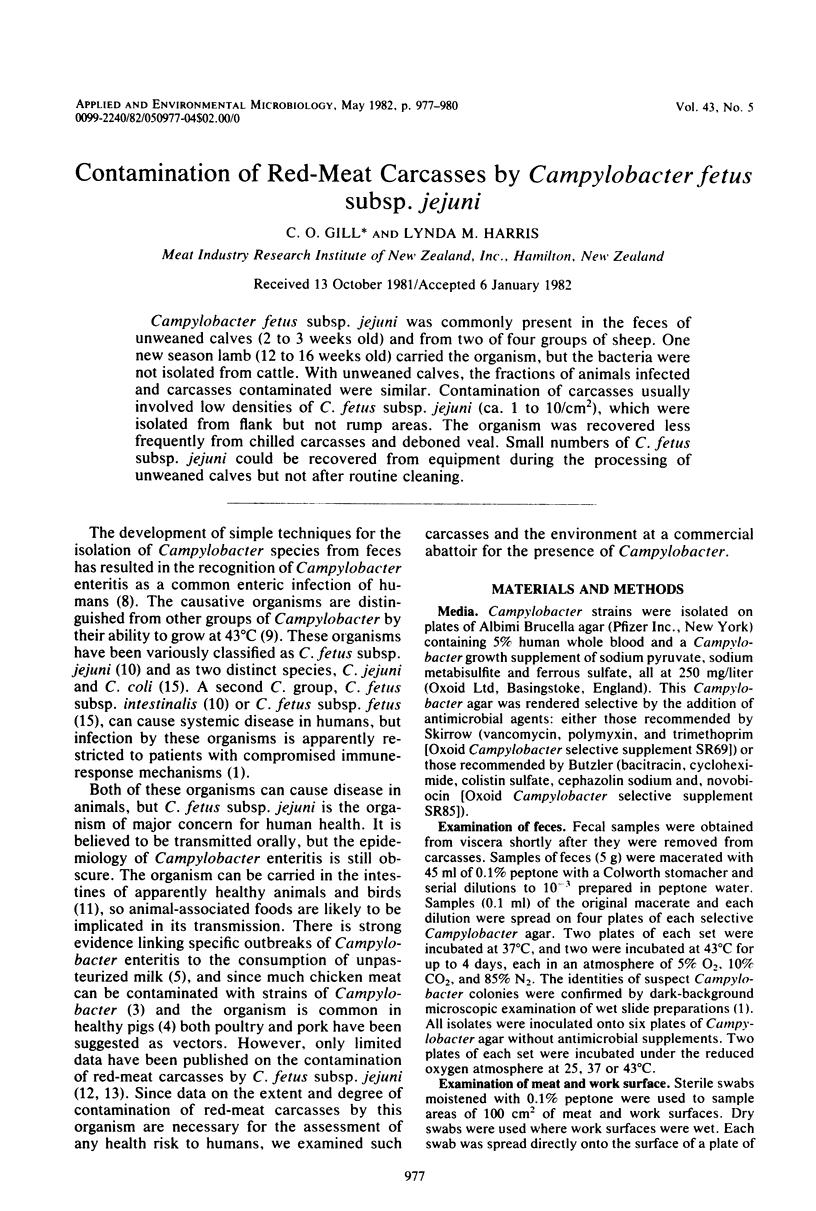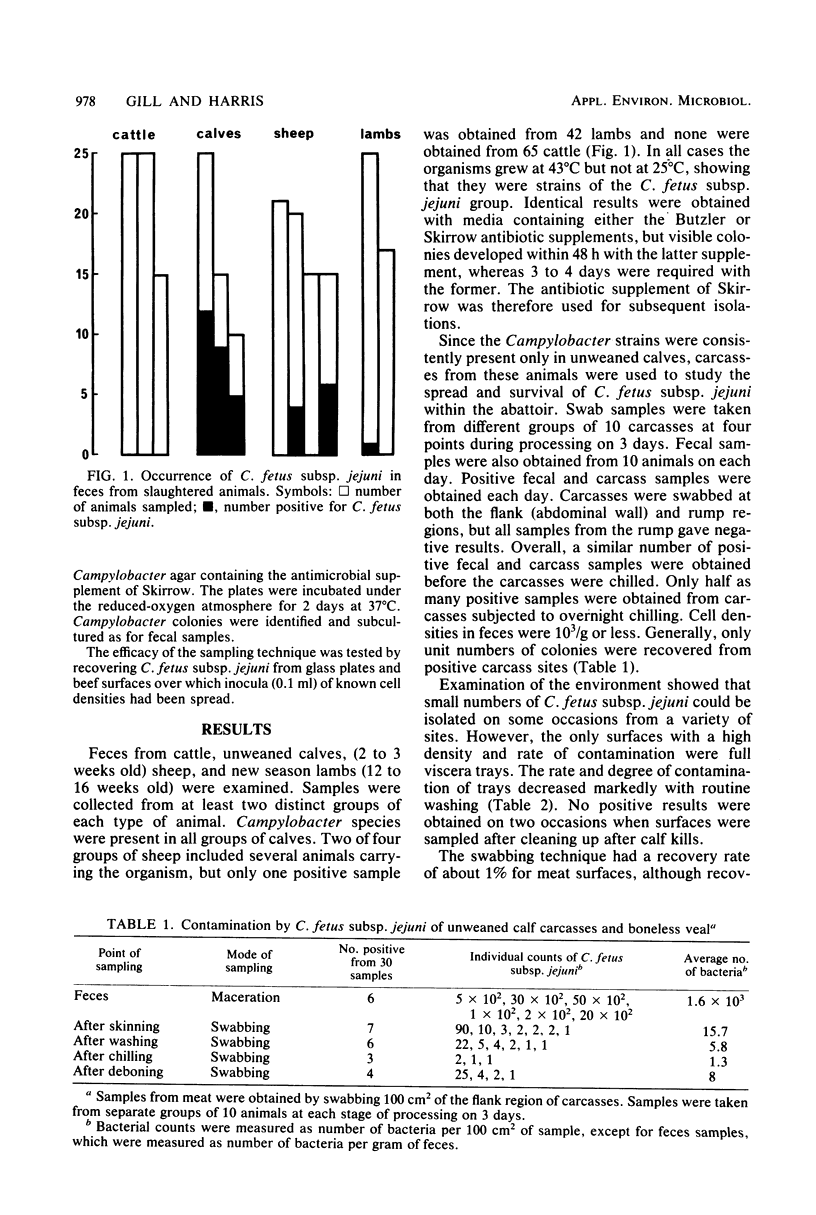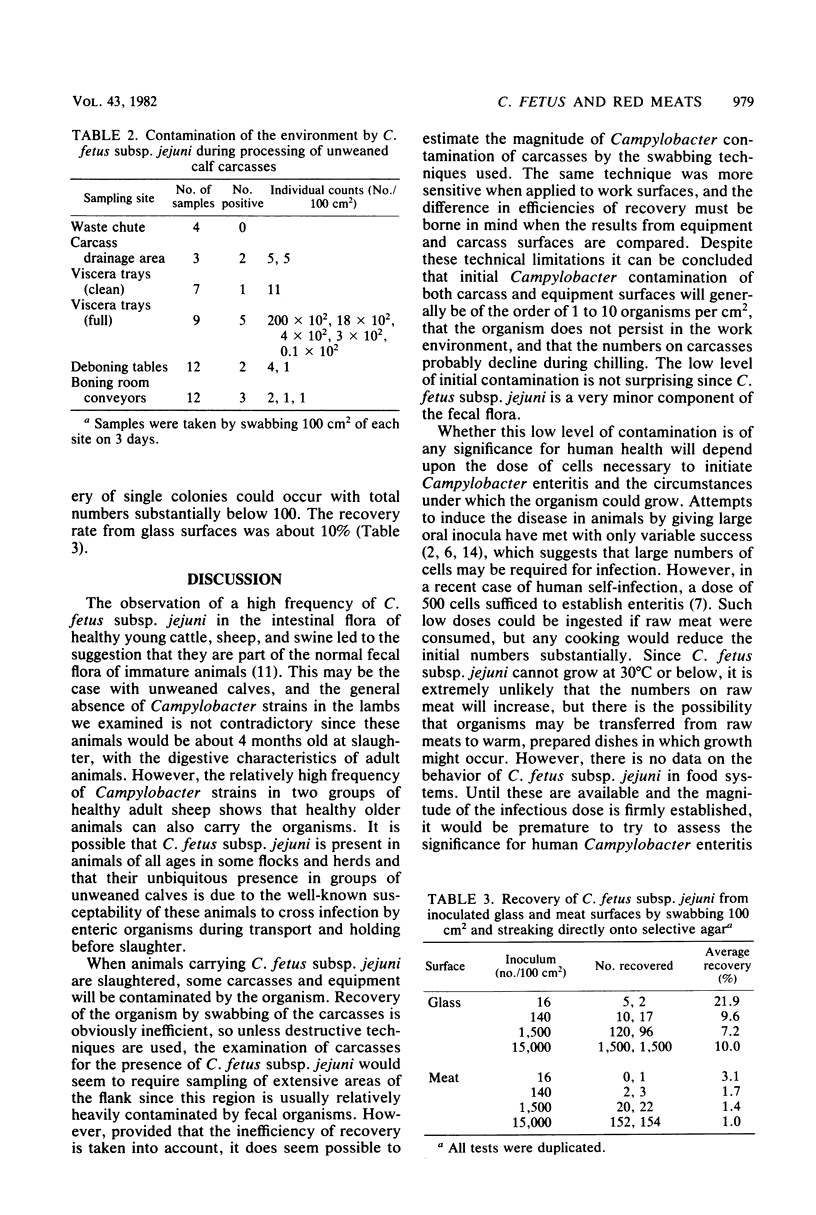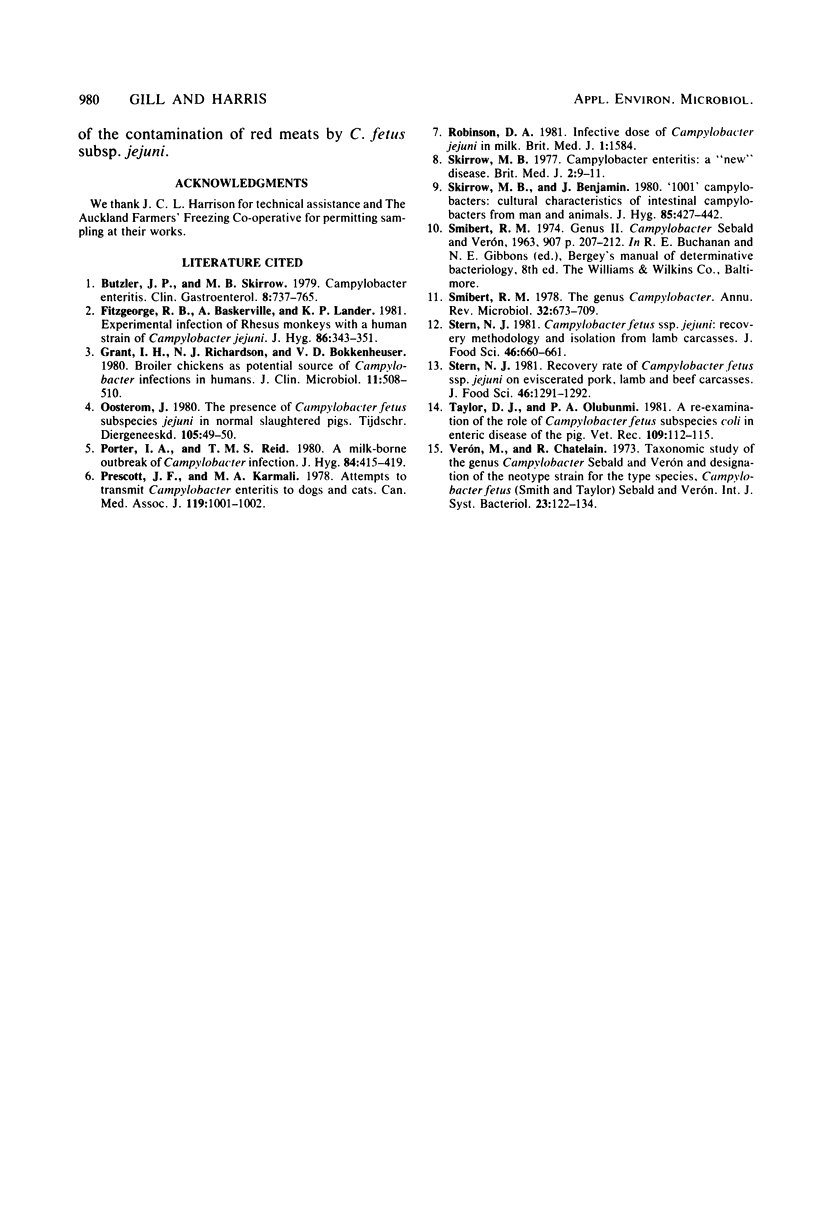Abstract
Campylobacter fetus subsp. jejuni was commonly present in the feces of unweaned calves (2 to 3 weeks old) and from two of four groups of sheep. One new season lamb (12 to 16 weeks old) carried the organism, but the bacteria were not isolated from cattle. With unweaned calves, the fractions of animals infected and carcasses contaminated were similar. Contamination of carcasses usually involved low densities of C. fetus subsp. jejuni (ca. 1 to 10/cm2), which were isolated from flank but not rump areas. The organism was recovered less frequently from chilled carcasses and deboned veal. Small numbers of C. fetus subsp. jejuni could be recovered from equipment during the processing of unweaned calves but not after routine cleaning.
Full text
PDF



Selected References
These references are in PubMed. This may not be the complete list of references from this article.
- Butzler J. P., Skirrow M. B. Campylobacter enteritis. Clin Gastroenterol. 1979 Sep;8(3):737–765. [PubMed] [Google Scholar]
- Fitzgeorge R. B., Baskerville A., Lander K. P. Experimental infection of Rhesus monkeys with a human strain of Campylobacter jejuni. J Hyg (Lond) 1981 Jun;86(3):343–351. doi: 10.1017/s0022172400069096. [DOI] [PMC free article] [PubMed] [Google Scholar]
- Grant I. H., Richardson N. J., Bokkenheuser V. D. Broiler chickens as potential source of Campylobacter infections in humans. J Clin Microbiol. 1980 May;11(5):508–510. doi: 10.1128/jcm.11.5.508-510.1980. [DOI] [PMC free article] [PubMed] [Google Scholar]
- Oosterom J. Het voorkomen van Campylobacter fetus subspecies jejuni bij normale slachtvarkens. Tijdschr Diergeneeskd. 1980 Jan 1;105(1):49–50. [PubMed] [Google Scholar]
- Porter I. A., Reid T. M. A milk-borne outbreak of Campylobacter infection. J Hyg (Lond) 1980 Jun;84(3):415–419. doi: 10.1017/s0022172400026942. [DOI] [PMC free article] [PubMed] [Google Scholar]
- Prescott J. F., Karmali M. A. Attempts to transmit campylobacter enteritis to dogs and cats. Can Med Assoc J. 1978 Nov 4;119(9):1001–1002. [PMC free article] [PubMed] [Google Scholar]
- Robinson D. A. Infective dose of Campylobacter jejuni in milk. Br Med J (Clin Res Ed) 1981 May 16;282(6276):1584–1584. doi: 10.1136/bmj.282.6276.1584. [DOI] [PMC free article] [PubMed] [Google Scholar]
- Skirrow M. B., Benjamin J. '1001' Campylobacters: cultural characteristics of intestinal campylobacters from man and animals. J Hyg (Lond) 1980 Dec;85(3):427–442. doi: 10.1017/s0022172400063506. [DOI] [PMC free article] [PubMed] [Google Scholar]
- Skirrow M. B. Campylobacter enteritis: a "new" disease. Br Med J. 1977 Jul 2;2(6078):9–11. doi: 10.1136/bmj.2.6078.9. [DOI] [PMC free article] [PubMed] [Google Scholar]
- Smibert R. M. The genus Campylobacter. Annu Rev Microbiol. 1978;32:673–709. doi: 10.1146/annurev.mi.32.100178.003325. [DOI] [PubMed] [Google Scholar]
- Taylor D. J., Olubunmi P. A. A re-examination of the role of Campylobacter fetus subspecies coli in enteric disease of the pig. Vet Rec. 1981 Aug 8;109(6):112–115. doi: 10.1136/vr.109.6.112. [DOI] [PubMed] [Google Scholar]


